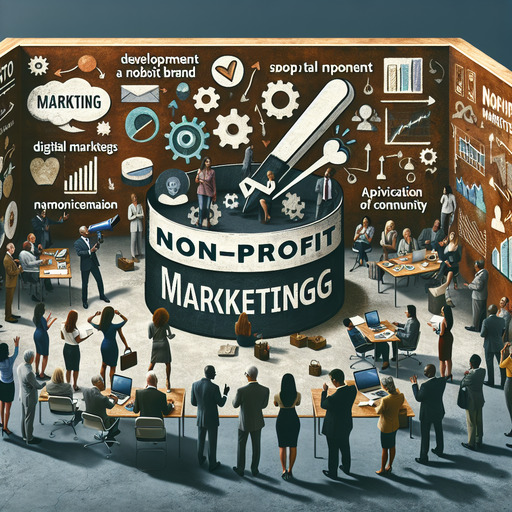
-
Table of Contents
- Effective Non-Profit Marketing Strategies: Engaging Donors and Amplifying Your Cause
- Understanding the Importance of Non-Profit Marketing
- 1. Building a Strong Non-Profit Brand
- 2. Leveraging Digital Marketing for Non-Profits
- 3. Enhancing Donor Engagement
- Conclusion: Amplifying Your Cause Through Strategic Marketing
- Questions and Answers
Effective Non-Profit Marketing Strategies: Engaging Donors and Amplifying Your Cause
In today’s competitive landscape, non-profit organizations must adopt innovative marketing strategies to stand out and effectively engage donors. With limited resources, non-profits need to be strategic in their approach to marketing, ensuring that every effort counts. This article explores actionable strategies for non-profit marketing, focusing on digital platforms, branding, and donor engagement.
Understanding the Importance of Non-Profit Marketing
Non-profit marketing is crucial for raising awareness, attracting donors, and driving engagement. By leveraging effective marketing strategies, non-profits can amplify their message and reach a broader audience. Let’s delve into some key strategies that can make a significant impact.
1. Building a Strong Non-Profit Brand
Your brand is the face of your organization. A strong brand communicates your mission, values, and the impact of your work. Here are some steps to build a compelling non-profit brand:
- Define Your Mission: Clearly articulate your mission and values. Ensure that they resonate with your target audience.
- Consistent Messaging: Maintain consistency in your messaging across all platforms to build trust and recognition.
- Visual Identity: Develop a cohesive visual identity, including a logo, color scheme, and typography, that reflects your organization’s ethos.
For example, Charity: Water has successfully built a recognizable brand by consistently showcasing their mission to provide clean water through compelling storytelling and visuals.
2. Leveraging Digital Marketing for Non-Profits
Digital marketing offers cost-effective ways to reach a wider audience. Here are some strategies to consider:
- Social Media Engagement: Utilize platforms like Facebook, Instagram, and Twitter to share stories, updates, and engage with your audience. Non-profit social media campaigns can drive significant engagement and awareness.
- Email Marketing: Build a strong email list and send regular updates, success stories, and calls to action to keep your donors informed and engaged.
- SEO Optimization: Optimize your website for search engines to increase visibility. Use relevant keywords like “non-profit digital marketing” and “donor engagement” naturally throughout your content.
Consider the case of the World Wildlife Fund, which effectively uses social media to engage supporters and raise awareness about environmental issues.
3. Enhancing Donor Engagement
Engaging donors is essential for sustaining support. Here are some strategies to enhance donor engagement:
- Personalized Communication: Tailor your communication to individual donors, acknowledging their contributions and impact.
- Storytelling: Share compelling stories that highlight the impact of donations. Use real-life examples to connect emotionally with your audience.
- Events and Webinars: Host events and webinars to engage donors and provide them with insights into your work and achievements.
For instance, the American Red Cross effectively uses storytelling to showcase the impact of donations, fostering a deeper connection with their donors.
Conclusion: Amplifying Your Cause Through Strategic Marketing
In conclusion, non-profit marketing is a powerful tool for amplifying your cause and engaging donors. By building a strong brand, leveraging digital marketing, and enhancing donor engagement, non-profits can effectively communicate their mission and drive meaningful support.
For further reading on non-profit marketing strategies, consider visiting this Wikipedia page on Nonprofit Organizations.
Questions and Answers
Q1: How can non-profits effectively use social media for marketing?
A1: Non-profits can use social media to share compelling stories, engage with their audience, and raise awareness about their cause. Regular updates, interactive content, and engaging visuals can drive significant engagement.
Q2: What role does storytelling play in non-profit marketing?
A2: Storytelling is crucial in non-profit marketing as it helps connect emotionally with the audience. By sharing real-life examples and success stories, non-profits can showcase the impact of their work and inspire support.
Q3: Why is branding important for non-profits?
A3: Branding is important for non-profits as it helps establish a recognizable identity, build trust, and communicate the organization’s mission and values effectively. A strong brand can attract donors and supporters.
If you’re interested in learning more about our services or have any questions about this blog, please reach out to us via our contact page.